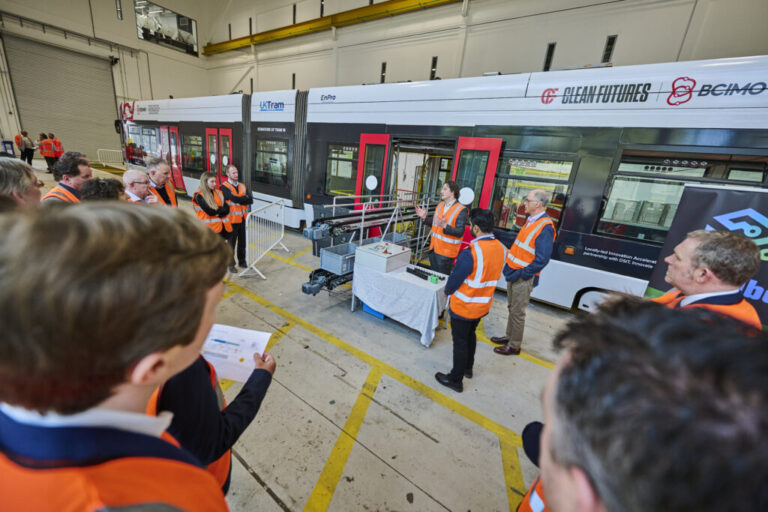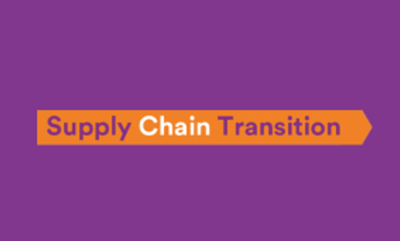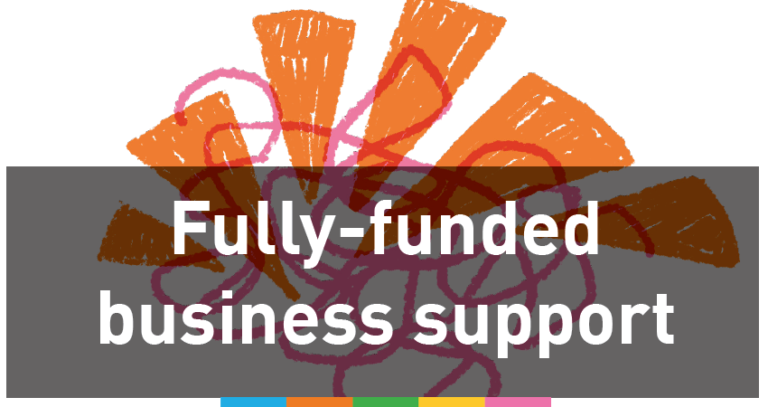
It’s been over a year now since the West Midlands Combined Authority successfully won the Urban Connected Communities’ national competition to be the major test bed for 5G. The decision invited excitement as well as scepticism, along with the questions: What is 5G? Who will benefit? How will we benefit? Why do we want it? When will it come? And perhaps most importantly, how will it transform the West Midlands?
Fortunately, the answers to these questions are becoming ever clearer.
5G is the fifth generation of mobile networks, working at speeds up to ten times faster than 4G, with greater capacity and lower latency. In the UK, networks such as EE, Vodafone and Three have begun to roll out 5G networks, alongside companies in the US (such as Verizon), South Korea (such as LG Uplus), and Australia (Telstra). With varying degrees of success, these examples have exhibited the consumer potential of 5G.
But if we zoom in on the UK, and then into the middle and a little to the West, we are now able to visualise the real-life impacts 5G can have on our region – for businesses and consumers alike. For three days in September, WMG5 teamed up with Ericcson and BCU to host a series of events at Millennium Point, Birmingham, showcasing the exciting 5G services and applications in development, focusing on areas such as healthcare, mobility and industry.
The demonstrations included:
- Pipes in the Wall
- Mixed Reality: Urbanisation
- Cloud Robotics
- Consumer Lab – A day in the Life of 5G
- The Smart Habits: Home Care Assistance System
The products and exemplars on show were not revolutionary in their concept – there is, for example, nothing “new” about virtual reality or robot machines. But what was demonstrated was the revolutionary impact 5G can have on their functioning and utilisation, which would ultimately improve productivity and efficiency and thus become a real step-change for the region’s economic output.
The demonstrations illustrated how real-time data could transform the way we live our lives. Imagine, for example, being able to look through a vehicle in-front of you in a traffic jam to see what’s ahead; or being able to watch a sports match in real-time through a virtual reality headset from the “best seats in the house”. These examples not only gave us a taste of what is to come, but also invited us to imagine the endless possibilities of having instant access to this data.
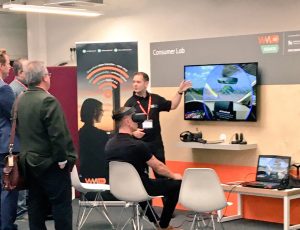
Take, for example, the Pipes in the Wall demonstration. The point being made here was not just that you can visualise the internal plumbing networks beyond a wall, but that you can appropriate real-time data that’s constantly downloading and updating. Similarly, mechanics can utilise this visualisation when fixing a car – using updated, relevant data, and saving time previously spent looking at plans. It can also be used for training, as well as remote guidance.
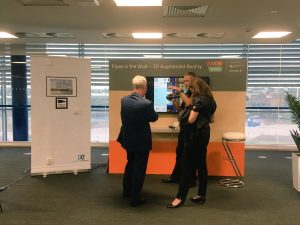
The concept of the Homecare Assistance System differed slightly in the way in which 5G could transform it. It was less about low latency, and more about being able to handle the volume of data being collected whilst competing for band width. The system innovatively combatted the difficulty between necessary protection and privacy of your parent in their home by collecting data to stimulate alerts that signify a problem. For example, if you were worried that they had left their hotplate on unmonitored, you could set an alert to notify you when no movement has been detected in the kitchen for over ten minutes. (Which is slightly less Big Brother.)
Other examples illustrated the capacity of 5G – with the cloud robots improving the productivity and reliability of machinery, and the mixed reality of urbanisation enabling consistently fresh information regarding the visualisation of an upcoming buildings, and enabling co-creation of public spaces through smart citizen engagement.

The demonstration reminded us that 5G is not just about downloading a film instantly on your phone when you’re on the London underground. Instead, the event highlighted the key areas that 5G can have a game-changing impact on productivity, efficiency, and the way we live our lives; and enabled us to visualise how 5G can truly transform the West Midlands.
Watch this space West Midlands – 5G is coming.
(Author: Rhiannon Davies, Innovation Alliance for the West Midlands)


